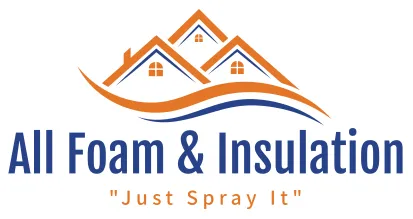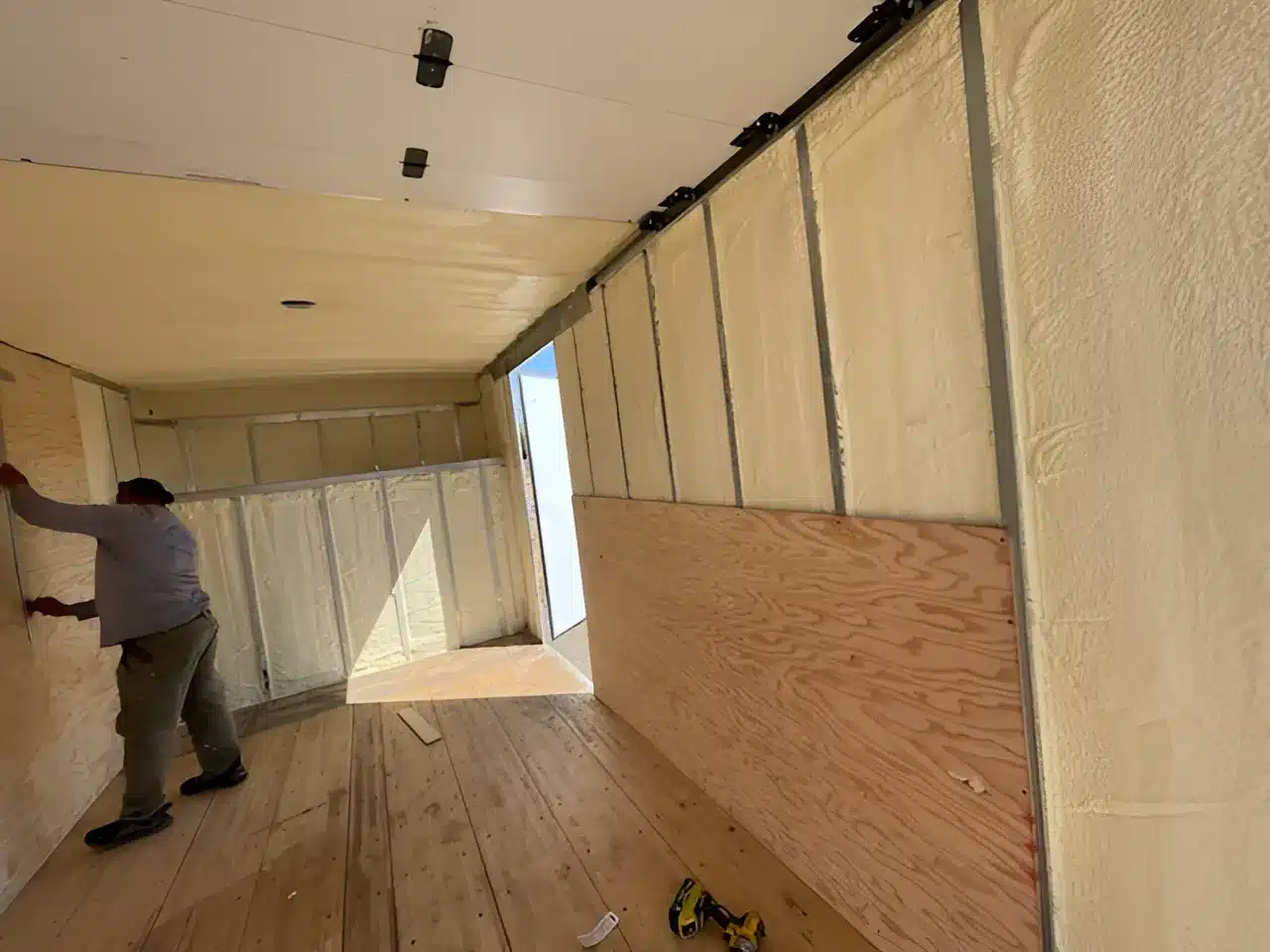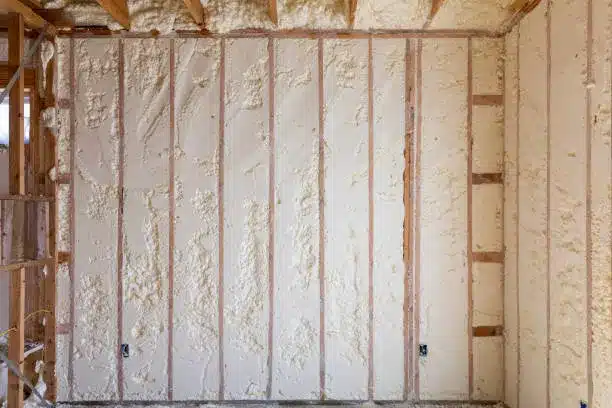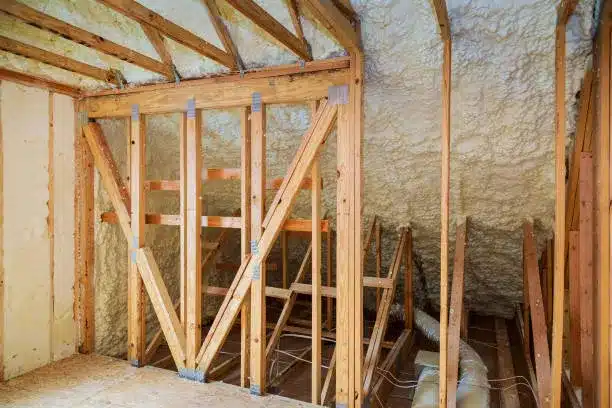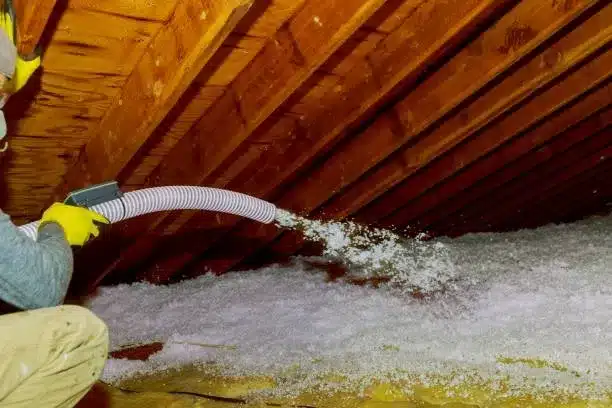Introduction
Living in regions with mild summers and chilly, damp winters can drive up heating bills if a home or business isn’t properly insulated. You might notice drafts sneaking through windows or uneven temperatures in different rooms, making comfort a challenge all year round. Insulation acts as a barrier that traps heat inside during cold months and keeps it out in warmer weather, directly impacting your energy use and wallet. In this area, where the Rogue River influences the local climate with its humidity and temperature swings, good insulation isn’t just nice to have; it’s essential for maintaining steady indoor conditions and cutting down on utility costs.
This guide breaks down everything you need to know about insulation tailored to your properties. You’ll start with the basics of how insulation works and why it fits the local environment so well. From there, explore the different types available, how they suit homes versus businesses, and the step-by-step process of getting them installed right. Learn about real savings through energy efficiency, tips for picking the best options, and ways to dodge common pitfalls. By the end, you’ll have the knowledge to make smart choices that keep your space comfortable and efficient. To help you get started, here’s what lies ahead:
Drawn from years of hands-on work installing insulation across southern Oregon, this resource covers the full spectrum. Expect practical advice on local building codes, climate-specific needs, and long-term maintenance. Whether you’re a homeowner tired of high bills or a business owner aiming to lower operational costs, these details will help you navigate the options confidently.
- Core principles and types of insulation that perform best here.
- Differences between residential and commercial applications.
- A clear installation guide.
- Strategies for measuring benefits and tackling issues.
- Insights into future developments.
Stick around, and you’ll walk away ready to upgrade your property effectively.
Why Insulation Matters
Areas with moderate temperatures but wet winters and occasional heat waves create unique demands on buildings. Average winter lows hover around 35°F, while summers can push into the 90s, according to climate data from the National Weather Service. Without solid insulation, heat escapes quickly through walls and roofs, forcing your HVAC system to work overtime.
Think about a typical local home: thin walls built decades ago might let in moisture from the frequent rains, leading to mold or structural damage over time. Businesses face similar issues, but on a larger scale; warehouses or offices with poor insulation see skyrocketing energy bills and uncomfortable workspaces that affect productivity. Proper insulation stabilizes temperatures, reduces moisture buildup, and even boosts property value by making spaces more appealing to buyers or tenants.
Local building codes, enforced by Josephine County, require specific R-values (a measure of thermal resistance) for new constructions and major renovations. For example, walls in this region need at least R-13 to R-21 depending on the setup, as outlined by Oregon’s energy efficiency standards. Skipping these can mean failed inspections or higher insurance premiums.
Market data backs this up: A study by the U.S. Department of Energy estimates that well-insulated homes use up to 20% less energy for heating and cooling, translating to hundreds of dollars in annual savings for residents facing average utility rates of about $150 monthly in winter.
For businesses, the stakes are higher. Commercial buildings account for 40% of U.S. energy consumption, and insulation upgrades can cut that by 15-25% in variable climates like this one.
Key Takeaways:
- Helps meet Josephine County building codes on R-values.
- Reduces energy costs by up to 20%, per DOE studies.
- Enhances comfort and property value for homes and businesses.
Understanding Insulation Basics
Insulation works by slowing the transfer of heat, measured in R-value; the higher the number, the better it resists temperature changes. Aim for materials that handle both thermal and moisture issues, since the area’s rainfall averages 30 inches yearly.
At its heart, insulation fills gaps in walls, attics, floors, and ceilings to create a continuous barrier. Fiberglass, a common choice, consists of fine glass fibers that trap air pockets for insulation. Cellulose, made from recycled paper, packs tightly and excels at air sealing.
You don’t need to be an engineer to get this: picture a thermos keeping your coffee hot; insulation does the same for your entire building. Poor installation leaves gaps that undermine the whole system, so attention to detail counts.
Local factors play a big role. The USDA Forest Service notes that in Pacific Northwest areas like Insulation must resist condensation to prevent rot in wooden structures. Start by assessing your current setup: check for drafts with a simple incense stick test; watch where the smoke wavers.
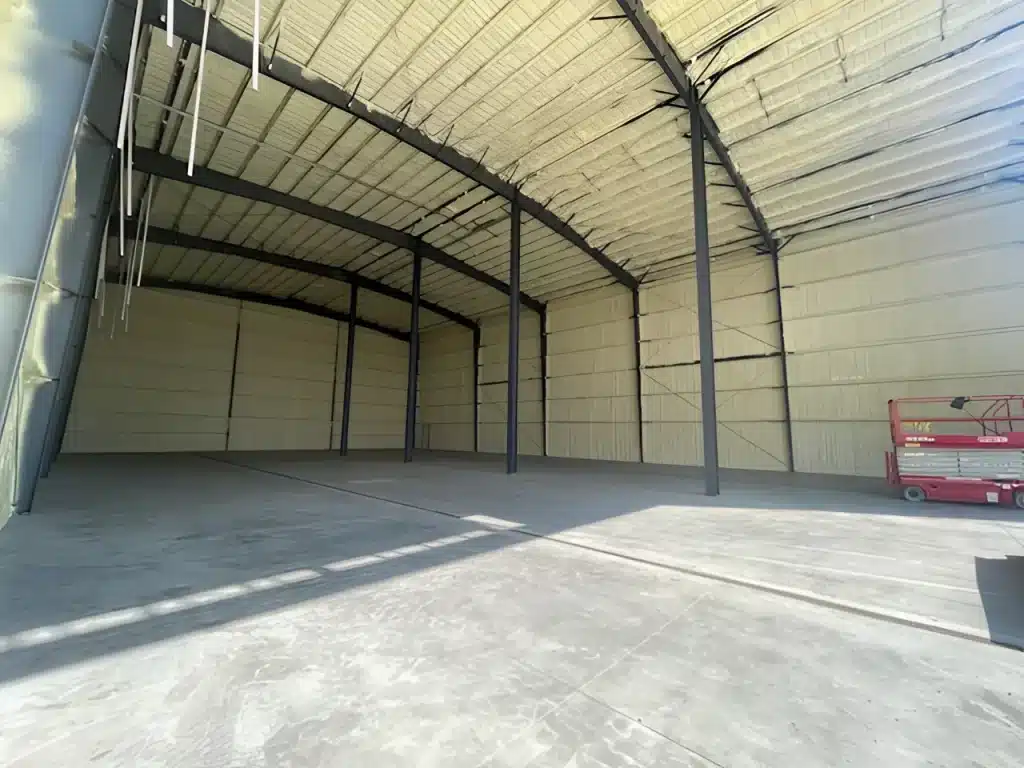
Types of Insulation for Local Properties
Several insulation types fit your insulation needs, each with strengths based on installation ease, cost, and performance.
Batt Insulation
Batt insulation comes in rolls or panels, often fiberglass or mineral wool. It’s straightforward for attics and walls in existing homes. Pros include affordability (around $0.50 per square foot) and DIY potential. Cons: It doesn’t seal gaps well alone, so pair it with spray foam for best results.
Blown-In Insulation
This method blows loose material like cellulose or fiberglass into cavities. Ideal for irregular spaces with settling foundations. It fills nooks completely, offering R-values up to 3.5 per inch.
Spray Foam Insulation
Spray foam expands to seal cracks, providing an air barrier alongside insulation. Closed-cell spray foam versions resist moisture better, crucial for humid local conditions. Expect R-6 to R-7 per inch, but it costs more; up to $2 per square foot.
Rigid Foam Boards
These panels go under siding or in basements, great for businesses needing flat surfaces. They offer high R-value (up to 5 per inch) and durability against the area’s occasional floods.
Here’s a comparison table to help weigh options:
| Type | R-Value per Inch | Cost per Sq Ft | Best For | Moisture Resistance |
|---|---|---|---|---|
| Batt | 3-4 | $0.30-$0.50 | Attics, walls | Moderate |
| Blown-In | 3-4 | $0.40-$1.00 | Hard-to-reach areas | Good (cellulose) |
| Spray Foam | 6-7 | $1.50-$2.50 | Sealing gaps | Excellent |
| Rigid Board | 4-5 | $0.50-$1.00 | Basements, exteriors | High |
Data from HomeAdvisor shows spray foam insulation delivers the quickest payback through energy savings. For optimal results based on these options. combine batts with blown-in insulation for walls to maximize coverage without breaking the bank; many local installs save 10-15% on bills right away.
Expert Tip: Combine batts with blown-in for walls to maximize coverage without breaking the bank; many local installs save 10-15% on bills right away.
Insulation for Homes vs. Businesses
Prioritize family comfort and modest energy needs, while businesses handle higher traffic and larger footprints.
For residences, focus on attics and walls where 70% of heat loss occurs . A typical 1,500 sq ft home might need 1,000 sq ft of wall insulation at R-19.
Businesses, like retail shops or offices, require commercial-grade options for ceilings and ducts. The Department of Energy reports that commercial insulation can reduce HVAC loads by 30%, vital for 24/7 operations.
Key differences: Homes use flexible materials for retrofits; businesses opt for fire-rated foams to meet occupancy codes. Costs scale up; residential projects average $2,000-$5,000, commercial $10,000+.
The Insulation Installation Process
Installing insulation starts with a site inspection to map out weak spots. Hire pros familiar with local permits from the city building department.
Step 1: Prepare the space. Clear attics of debris and seal air leaks with caulk.
Step 2: Choose and measure materials. Calculate needs using online R-value calculators from Oak Ridge National Laboratory.
Step 3: Install. For batts, fit snugly without compression; blown-in requires a machine for even distribution.
Step 4: Inspect and test. Use infrared cameras to spot misses; essential in this climate to avoid condensation.
Expert Tip: Always add vapor barriers in crawl spaces here; the damp soil can wick moisture up, leading to warped floors if ignored. Schedule installs in dry seasons for easier access.
Energy Efficiency and Cost Savings
Good insulation pays off fast. The average household spends $1,800 yearly on energy, but upgrades cut that by 15%, saving $270 annually, according to Insulation Institute.
Businesses see even bigger wins: A local restaurant insulating its kitchen could save $5,000 yearly on cooling, based on Oregon commercial energy audits.
Calculate ROI with this simple formula: Savings = (Current Bill x Efficiency Gain) – Install Cost. Payback often hits in 2-5 years.
Rebates from Pacific Power or federal tax credits via the Inflation Reduction Act boost returns; up to $1,200 for homeowners.
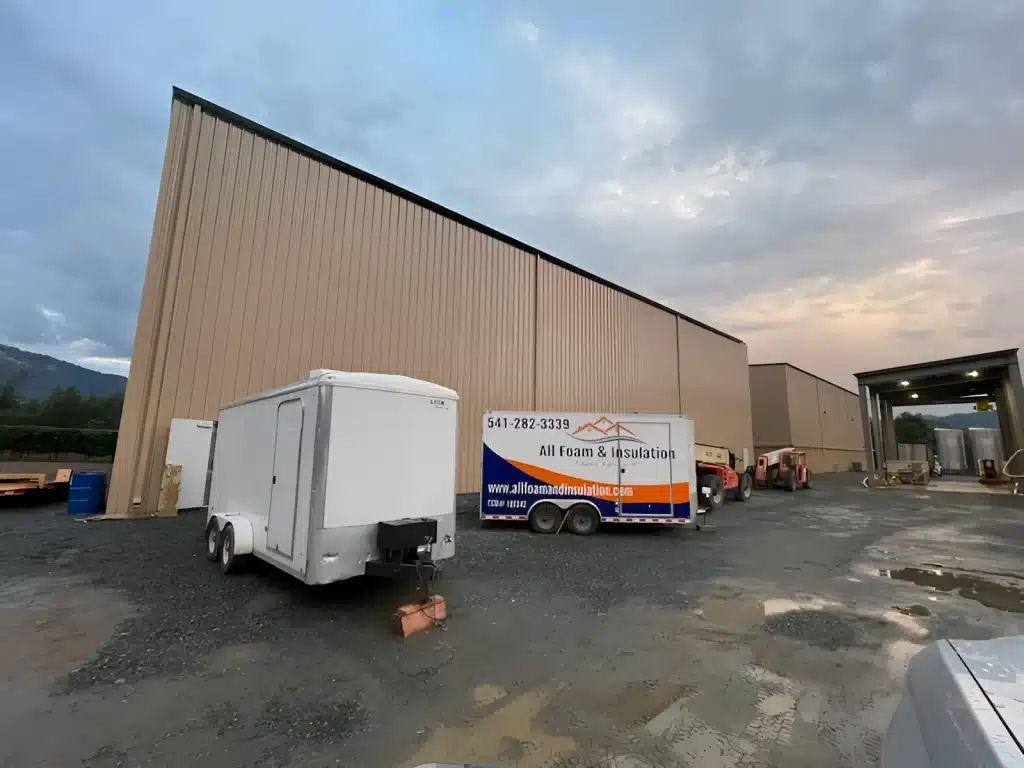
Key Takeaways:
- Expect 10-30% reductions in energy use tailored to local needs.
- Factor in rebates to shorten payback periods.
- Track savings with utility bills for ongoing proof.
Choosing the Right Insulation for Your Property
Match type to your space: Damp basements suit rigid foam; sunny roofs need reflective barriers.
Consult audits: Free energy assessments from Energy Trust of Oregon help pinpoint needs.
Expert Tip: Test for asbestos in pre-1980 homes before disturbing old insulation; common in attics and a health risk if mishandled.
Common Mistakes and How to Avoid Them
Skipping air sealing leads to 20-30% efficiency loss, says Building Science Corporation. Compress batts, and R-value drops by half.
Solutions: Layer materials, follow pro installs, and maintain annually.
For businesses, overlooking ducts in unconditioned spaces wastes 20% of heated air.
Expert Tip: Use blower door tests post-install; under 3 ACH50 (air changes per hour) means success in this zone.
Maintenance and Long-Term Care
Insulation lasts 20-50 years with care. Inspect attics yearly for settling or pests; rodents love fiberglass.
Clean ducts every 5 years to keep efficiency high. In businesses, monitor roof insulation for wear from equipment vibrations.
Signs of trouble: Rising bills or cold spots. Fix small issues early to avoid full replacements.
Future Trends in Insulation
Smart insulation with sensors for real-time monitoring emerges, integrated with home automation. Aerogel materials promise higher R-values in thinner layers, ideal for retrofits.
Oregon pushes green building; look for incentives on plant-based foams. By 2030, expect 50% of new installs to be sustainable, per Green Building Council.
Stay ahead: Follow updates from local energy programs.
Putting Your Insulation Strategy into Action
You’ve now got a solid grasp on insulation from basics to advanced care. Key points: Pick types that fight local dampness, install properly for max savings, and maintain to keep benefits flowing. Use this as your reference; start with an audit, then plan upgrades that fit your budget and needs. You’ll enjoy comfier spaces and lighter bills for years.
Need Expert Guidance?
For personalized advice on insulation suited to your home or business, reach out to All Foam & Insulation, LLC. Their team brings deep local knowledge to every project. Contact Joe at [email protected] or call (541) 826-9600 to schedule a consultation and get started on efficiency improvements today.
Frequently Asked Questions About Insulation for Homes and Businesses in
Is spray foam worth the extra cost here?
Yes, if sealing is key; it handles moisture well and saves more long-term in humid climates. Payback in 3-5 years through lower bills.
How does insulation affect my property value?
It can add 5-10% by improving efficiency ratings, appealing to eco-conscious buyers. Appraisers note it in energy-efficient homes.
Can I install insulation myself?
Simple batts in accessible areas, yes; but blown-in or foam needs equipment and safety gear. Pros ensure code compliance and avoid health risks like fiberglass irritation.
What about insulation for historic buildings in town?
Use breathable materials like dense-pack cellulose to preserve original structures without trapping moisture, per historic preservation guidelines.
Are there grants for business insulation upgrades?
Yes, through Energy Trust of Oregon and federal programs; up to 50% coverage for qualifying projects that meet efficiency standards.
Sources
- U.S. Department of Energy – Guidelines on insulation types, R-values, and energy savings for homes and buildings.
- Oak Ridge National Laboratory – Tools and data for calculating insulation needs.
- Insulation Institute – Data on household energy costs and insulation benefits.
- Building Science Corporation – Advice on common insulation errors and air sealing.

